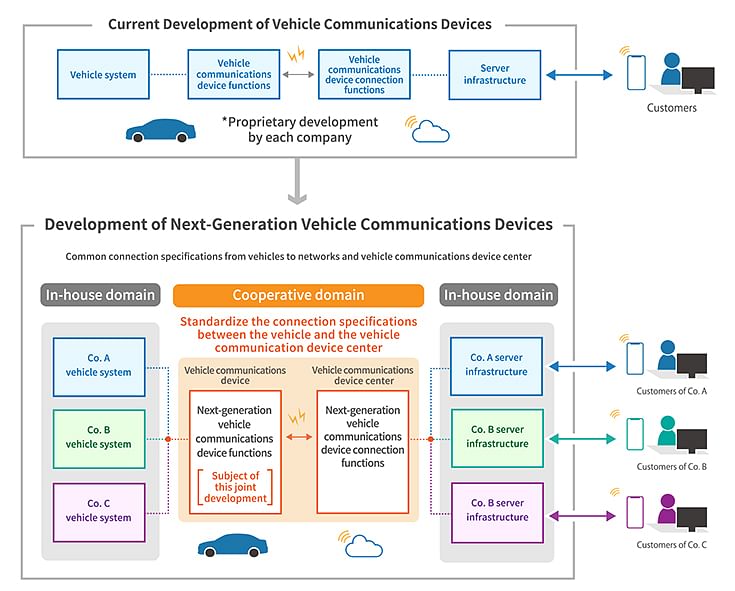Suzuki, Subaru, Daihatsu, Toyota and Mazda to standardise tech specs for connected vehicles
Five Japanese carmakers to collaborate on standardisation of communications systems for early provision of safer and more convenient connected services
Suzuki Motor Corporation, Subaru Corporation, Daihatsu Motor Co, Toyota Motor Corporation and Mazda Motor Corporation (Mazda) have reached an agreement to jointly develop technical specifications for next-generation vehicle communications devices.
They will also promote the common use of communications systems, by using connected services to link automobiles and society with the aim of creating new appeal, value and services, to be standardised for early provision of safer and more convenient connected services.
Within the field of CASE (connected, autonomous/automated, shared, and electric), which is said to be bringing about major transformations in the automotive industry, rapid advances are being made in the connected domain, in relation to the communications and data aspects of technology and business including cloud services, IoT, big data, and AI. Individual automobile manufacturers are independently developing vehicle communications devices, and even in cases where the same connected services such as remote operation functions are provided, each company is adopting a different approach in proceeding with development and deploying relevant resources.

In response to these circumstances, the five Japanese carmakers say they “can provide safer and more convenient connected services to customers as early as possible, by positioning the development of vehicle communications devices, which are basic functions of the connected car, as a cooperative domain; positioning the development of applications and services as an in-house domain; and achieving greater efficiency and accelerating the development of vehicle communications devices. Each company can focus more on the development of applications and services on this common infrastructure through these steps.
Common connection specifications
At this time, Suzuki, Subaru, Daihatsu, and Mazda, while incorporating their own technologies into the base vehicle communications technologies developed by Toyota, will together build systems for next-generation connected cars with common connection specifications from vehicles to networks and the vehicle communications device centre.
As a result, by stabilising the communication quality between vehicles and vehicle communications device centre further, it will be possible to provide more convenient connected services to customers, such as clearer calls between customers and operators and faster connection speeds. At the same time, it will be possible to reduce the development burdens of each participating company and simplify system operation and version upgrades that include additional new functions, thereby optimizing resources such as facilities and personnel.
Suzuki, Subaru, Daihatsu, Toyota, and Mazda say they will also openly consider collaboration with other like-minded partners regarding the joint development agreed on at this time.
RELATED ARTICLES
Skoda begins sale of made-in-India CKD Kushaq in Vietnam
Before production started, pre-series Kushaq vehicles covered over 330,000 kilometres on a variety of Vietnamese roads a...
Six Japanese companies join forces to expand use of recycled materials in new vehicles
Denso, Toray Industries, Nomura Research Institute, Honda Motor, Matec Inc and Rever Corporation have set up the BlueReb...
BYD selects Voestalpine as steel supplier for its Hungarian plant
The announcement of the Austrian steelmaker as a supplier demonstrates BYD’s strategic plan to source from high-quality,...





 By Autocar Professional Bureau
By Autocar Professional Bureau
 27 Apr 2021
27 Apr 2021
 13514 Views
13514 Views









